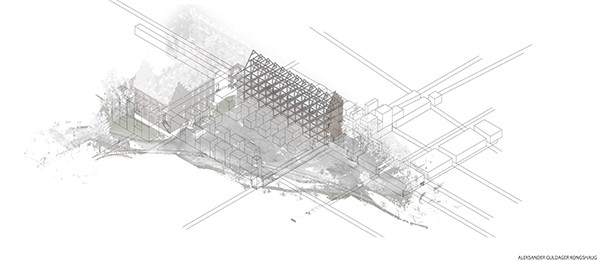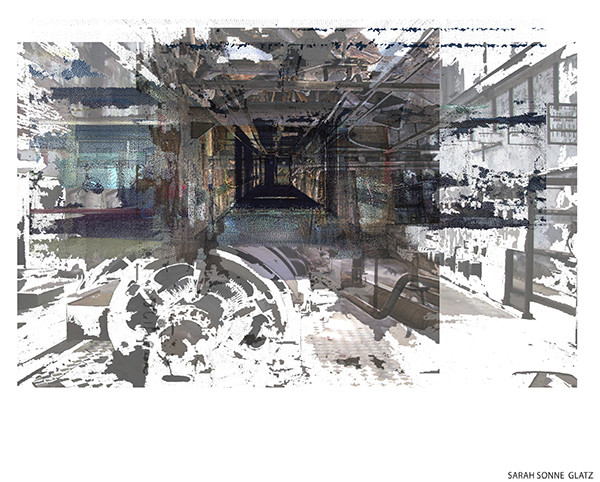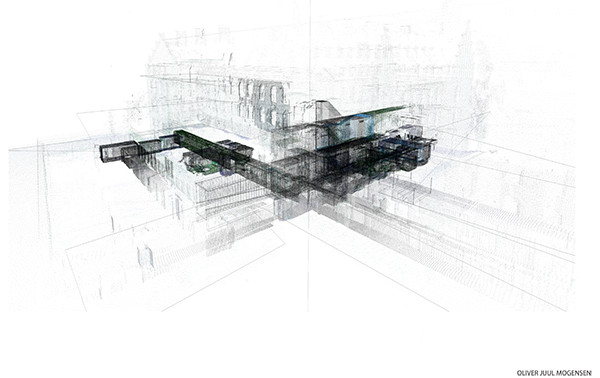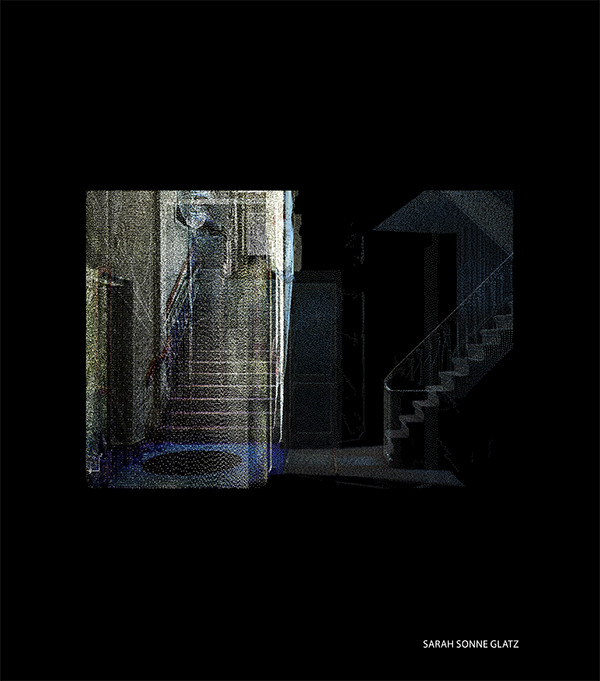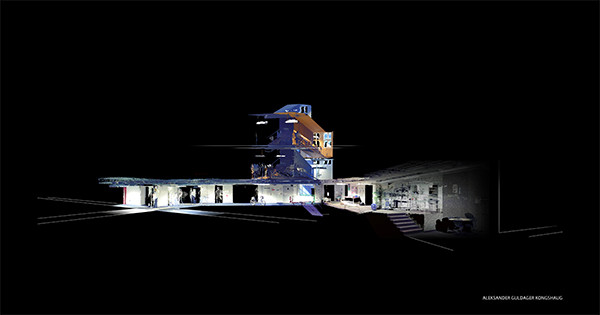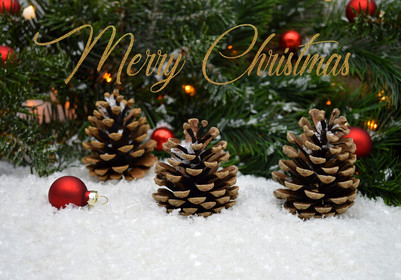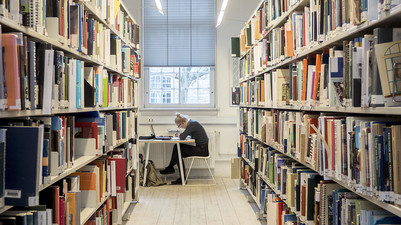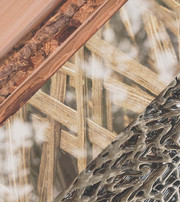
Hybrid Registrations Workshop (2014)
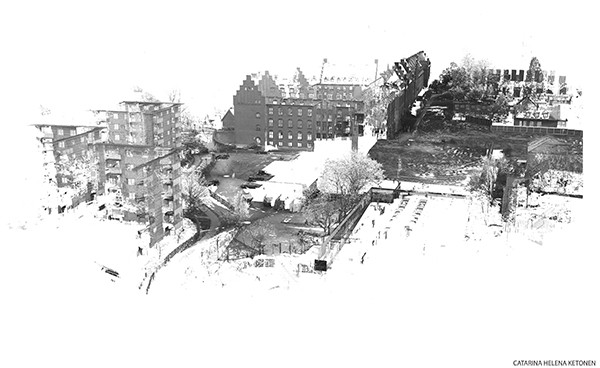
Student workshop organised by CITA: Martin Tamke, Henrik Leander Evers / Anders Per-Kristian Hansson
In collaboration with: LE34 / Jamie Meunier
Format: 3day short workshop 14, 17.-18.. November 2015
Any architectural design task requires inspiration and information. 3D scanning provides an overload of this information. The current challenge is however to find ways into the raw data for architectural design. New approaches for this are developed within the DURAARK project and give rise to workshops with students at KADK. These speculative and hands-on workshops help to evaluate the developed tools and techniques and create new research directions.
The workshop Hybrid Registrations investigated how to extract relevant and precise information in order to build arguments for design, and how to use the overload of information as a resource for inspiration and design exploration. The students in the workshop were pursuing both directions.
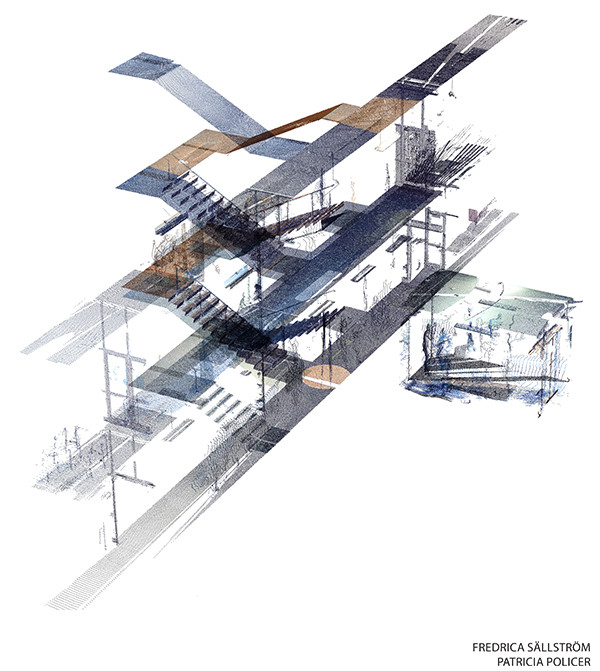
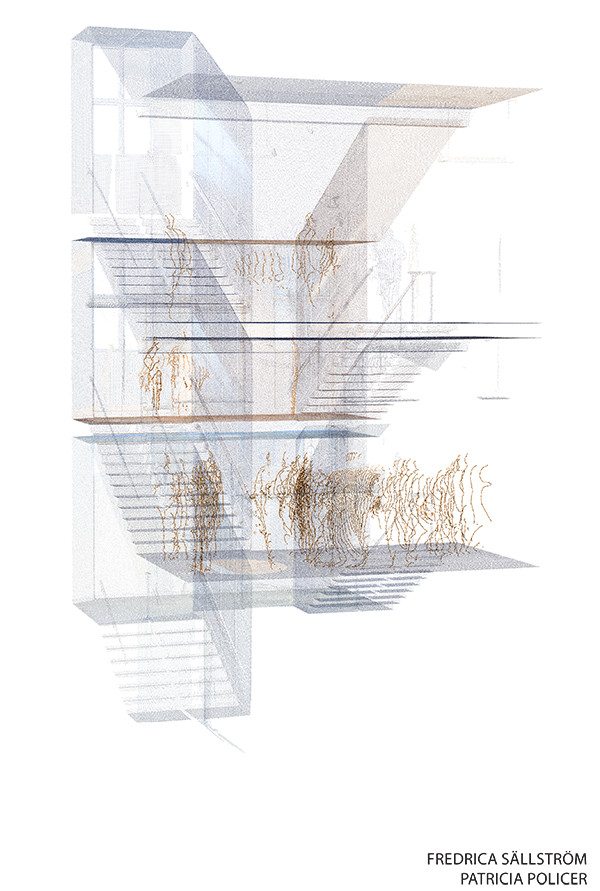
The workshop is based on the research of CITA into the potentials and techniques of 3D laserscanning for architectural design. The workshop extends the work of CITA in the EU funded DURAARK project, where a workflow for the integration of point cloud data into architectural design tools (Revit / Rhino / Grasshopper) is under development. The workshop probed the developed workflows to register 3D spaces with laserscanning devices and to analyse and process the gathered point cloud data.
The workshop provided a platform to speculate about future practices of working with 3D registrations in relation to drive architectural concepts and novel ways to represent architecture.
The point of departure for the workshop were the student’s earlier examinations and mappings at Diakonissetstiftelsen. Participants investigated how these can be extended through the use of 3D scanning and visualization techniques. The task was to challenge the use of 3D laserscan data for photorealistic “semi objective” representations and focus on the use of data to provide observers of the work with personal insight about the building’s setup and atmosphere and to generate a narrative in the representations. An interest emerged into hybrid techniques of lines, surfaces and point clouds.
FOCUS
Participants were asked to develop a narrative for the spaces, that highlight:
* how the old meets the new
* how inside and outside correlate
* how buildings developed over time and how the materials, constructions and details evolve
* how and where public, semi public and private .
